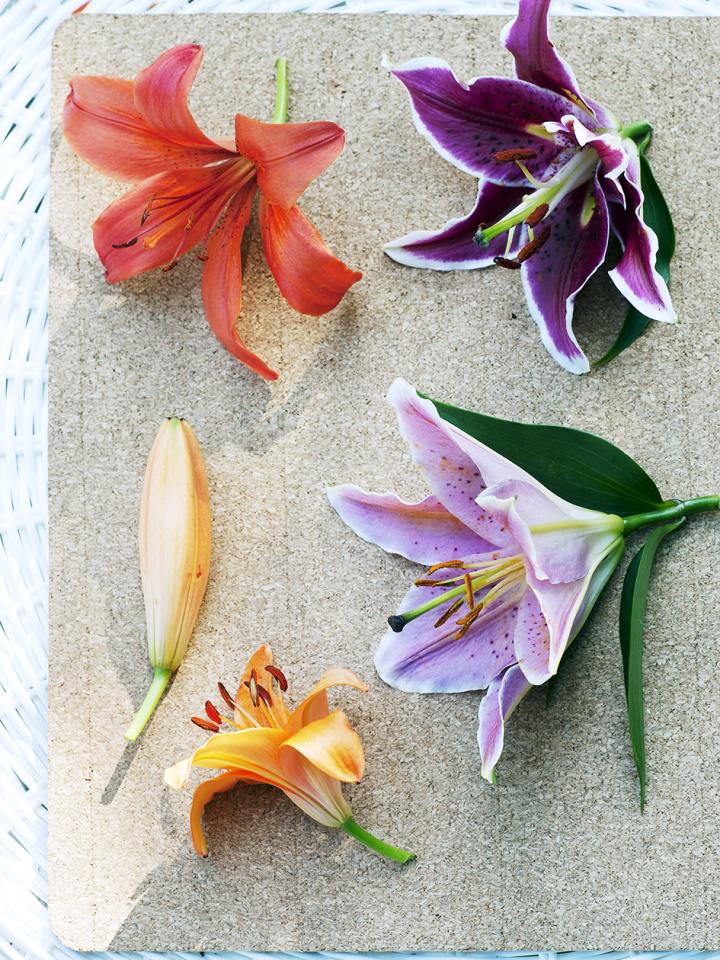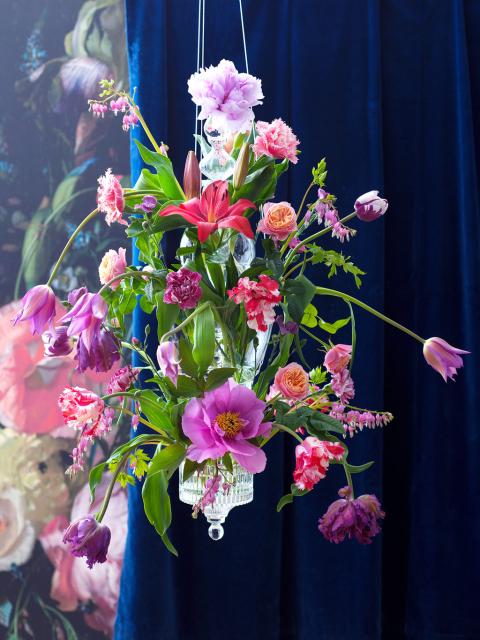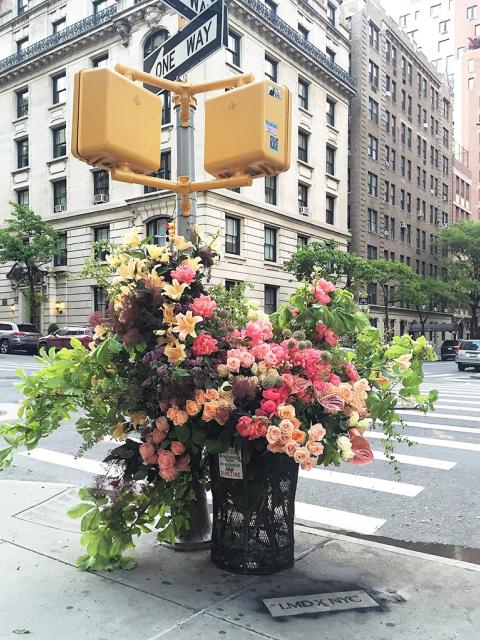LILIES: CHARACTERISTICS AND FLOWERS
Lily, or Lilium, is characterised by large, trumpet-shaped flowers with six petals. Lilies come in many different colours, ranging from serene white to calm pink, striking red, yellow, purple and orange. They can come with stripes, frilled edges or dots. There's also great diversity in the shape of the flower, ranging from trumpet-shaped to flat and bowl shapes. The size of the flowers ranges from 7 to as much as 25 centimetres. Fragrance is another striking aspect of the lily - while some are odourless, others are strongly scented.
Lilies belong to the lily family (Liliaceae), which also includes other bulb-grown plants such as tulips, hyacinths and snowdrops. Lilies are best known as cut flowers, but they bloom beautifully in your garden or on your balcony. Lilies are perennials (with a non-woody stem). They die off in winter and grow back each year from their base. With their height and colourful flowers, the lily adds a lot of glamour to your garden! They are true summer bloomers. Depending on the variety, they reliably bloom between June and September each year.
TYPES OF LILIES
There are more than 100 different varieties of lilies. They vary in colour, shape, scent and flowering period. Lilies can be divided into several species, such as Asian, Oriental, Longiflorum, Turkish lilies and many hybrids in between.
- Asiatic lilies: these lilies usually have upright flowers in bright colours, such as red, yellow, orange and pink. The flowers are somewhat smaller than other lily varieties, the petals are straight (without wavy edges) and the flowers don't have a strong scent. The stems of this species grow about 60-100 centimetres high and the flowers are compactly clustered on the stem. Asiatic lilies usually flower from late spring to early summer.
- Tiger lilies: tiger lilies belong to the Asian lily family, but are worth mentioning because of their striking appearance. Tiger lilies can be recognised by their distinctive, speckled petals. The flowers face slightly downwards and are usually orange or red with dark spots. This species blooms in mid- and late summer.
- Oriental lilies: these lilies are also called Japanese lilies. They are known for their large, fragrant flowers and luxurious appearance. The flowers face outwards and may have slightly wavy petals. They usually come in white, pink, red and purple. Oriental lilies grow about 1-1.5 metres tall, so supports may be necessary. This variety usually blooms in late summer (August and September).
- Madonna lily: the Madonna lily, also called Lilium Candidum, belongs to the Oriental lily family and is one of the best-known and oldest lilies. Traditionally known for its large, fragrant flowers, this white lily has been appreciated for its beauty and elegance. It also used to be used for medicinal purposes. This white lily is the symbol of innocence, virginity and purity, hence the name ‘Madonna’, referring to the Virgin Mary in Christianity.
- Longiflorum lilies: these scented lilies, also called trumpet lilies, have long, slender and fragrant flowers with a characteristic trumpet shape. They grow about 90cm-1.50m tall and usually bloom between June and August.
- Martagon lilies: these fragrant lilies are also called Turkish lilies, because the curled petals have a turban-like shape. The flowers of the martagon lily hang down and are often a purple, red, yellow or white in colour, with small spots on them. The stamens are distinct. Martagon lilies flower relatively early, in June and July.
- Hybrid varieties: there are many hybrid varieties, such as LA lilies or American hybrids (these lilies are a cross between Longiflorum and Asian lilies) and OT lilies (cross between Oriental and Longiflorum/trumpet lilies).
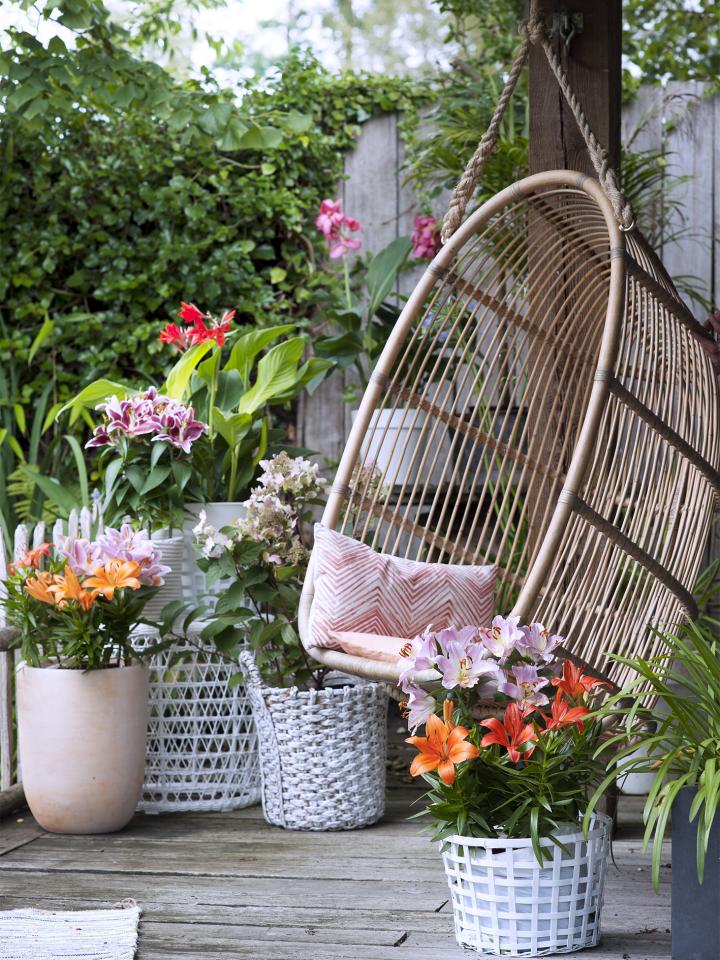
LILY IMPERSONATORS
There are many flowers that have ‘lily’ in their name. Examples include water lily, African lily (Agapanthus), lily of the valley, heart lily (hosta), day lily and peace lily. Although their name suggests they are lilies, these plants are true lilies or even lily relatives. True lilies must belong to the genus Lilium.
HOW TO care for cut lilies in your vase
Whether you have a whole bunch of lilies in your home or a few beautiful specimens in a mixed bouquet, the lily is a real eye-catcher in any vase, and naturally you want to enjoy them for as long as possible! Check out the lily care tips below and take a look at our extensive article with tips and tricks for cleaning your vase and taking the best possible care of a vaseful of cut flowers.
- At the florist, choose lilies whose buds are not yet fully open. These lilies will last the longest at home.
- Cut the stems diagonally with a sharp, clean knife.
- Remove lower leaves from the stems so that no leaves drop into the vase water. This can cause mould and bacterial growth.
- Add cut flower food to the water for longer lily shelf life.
- Place the lilies in a vase with lukewarm water.
- Don't place the vase in full sun, in a draught or near a heater.
- Never put lilies (or any other flowers) next to a fruit bowl. Ripening fruit exudes ethylene gas, which causes flowers to wilt faster.
- Change the vase water regularly.
- Afraid of nasty pollen stains or want to reduce the smell of the lilies? Cut away the stamens.
- Still got a lily pollen stain on your clothes? Carefully remove the stain with a piece of adhesive tape.
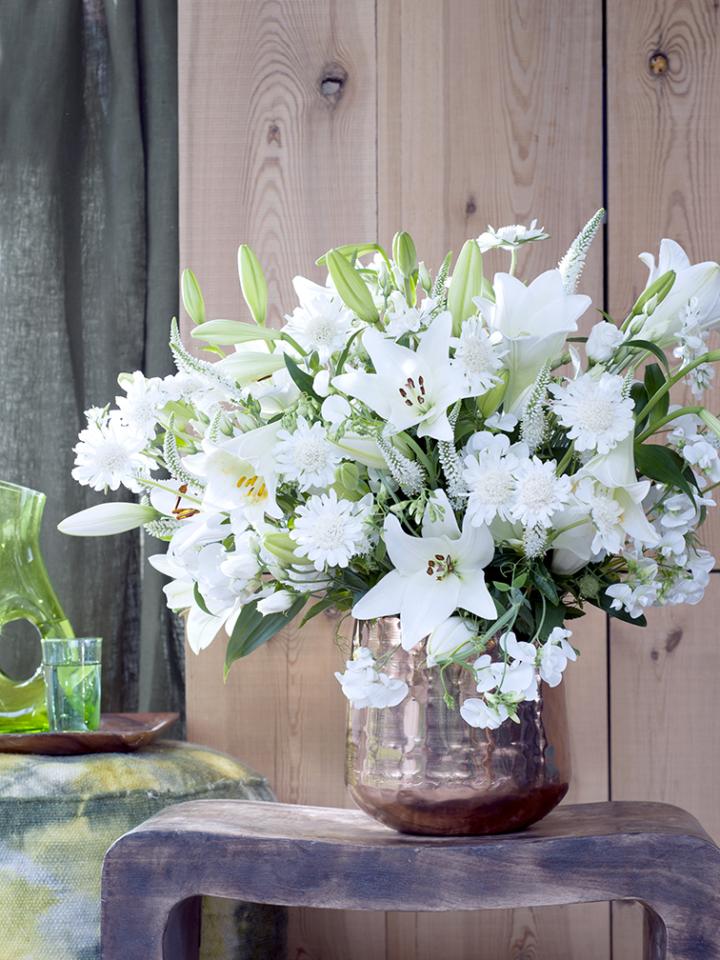
LILIES IN YOUR GARDEN: LOCATION AND CARETAKING
Do you have lilies in your garden or on your balcony? Lilies are hardy, so with the right care, you can enjoy their beauty for years to come! Check out the tips below for planting, positioning and care of lilies as a garden plant:
- Planting lily bulbs is easy. Plant the bulbs as soon as possible after purchasing in spring or autumn.
- Plant lily bulbs about 10-15 cm deep in the soil. Keep a planting distance of between 20-40 cm.
- Make sure the tip of the bulb points upwards when you plant it. In general, the bigger the bulb, the bigger the flower.
- Lilies like to have their ‘head’ in the sun and ‘feet’ in the shade. They therefore do very well among low-growing plants with large leaves. You can also place a layer of organic material, such as tree bark, around the plant.
- Asiatic lilies are easier to care for than Oriental lilies. Oriental lilies are less tolerant.
- Lilies thrive best in a sunny position (full sun to light shade). Preferably give them a spot with about six hours of sunlight a day.
- Lilies like well-drained soil, so avoid places where water can accumulate.
- Some lilies grow very long stems, which need support (from a stick, for instance) to prevent them from bending or breaking.
- In spring, you can fertilise lilies with organic fertiliser. It's important to give potted lilies plenty of nutrients.
- You can leave lily bulbs in the ground. Preferably plant them in a different spot every five years, after they have flowered (in the autumn).
WHAT SHOULD YOU DO WHEN LILIES HAVE FINISHED BLOOMING?
Have the lilies in your garden or on your balcony finished flowering and you want to know the best thing to do next, and whether you should prune a lily? Check out the tips below so you can enjoy lilies in your outdoor space year after year.
- Remove spent flowers immediately by cutting off the stem, so that the plant's energy goes towards new growth.
- When the lily plant has completely finished flowering and the leaves turn yellow, it's time to prune. You can cut off all the stems to just above the ground. Leave the leaves at the base of the plant, as they will die off naturally in autumn and provide protection and nutrients for the bulb.
- You may want to add a layer of organic material around the plant in winter to protect it from winter cold.
- In spring, new shoots will emerge from the bulb and you can remove any withered remains.
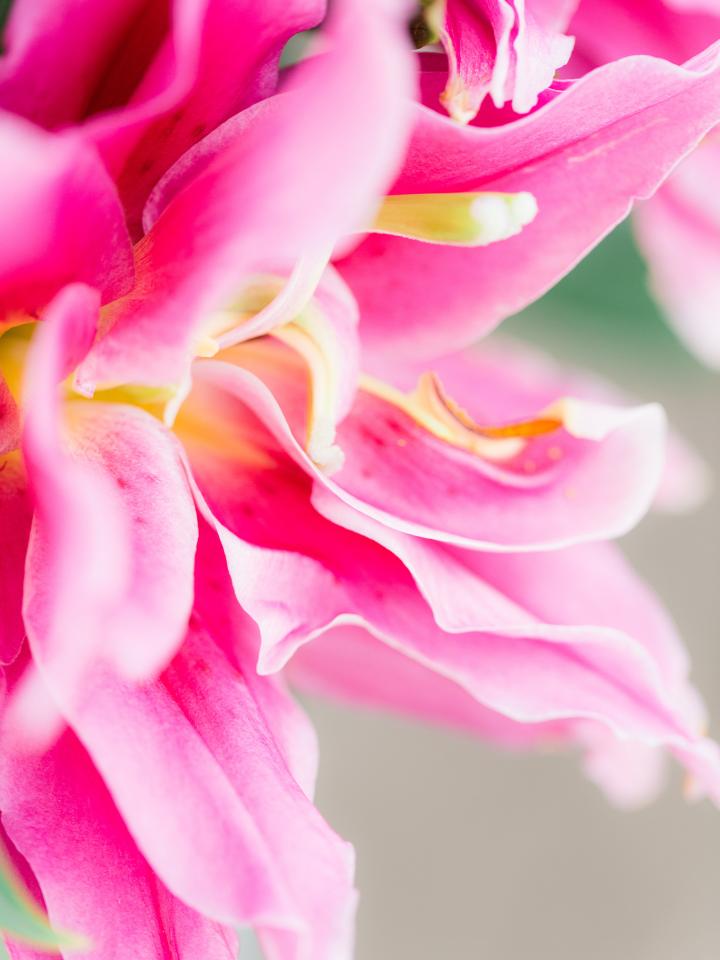
THE MEANING OF LILIES
If one flower is traditionally rich in symbolism, it's the lily! In many cultures, the lily symbolises purity, femininity, impermanence and love. The exact symbolism of the lily is often determined by a specific occasion and/or the colour of the lilies.
- Femininity: in the time of the Greeks and Romans, brides were given a crown of lilies in the hope of a pure and fruitful life.
- Love: in Victorian times, if someone gave you a sweet-smelling lily, you knew for sure that they were your lover.
- Purity: lilies are often used at weddings as a sign of virginity and purity. You often see the lily in bridal bouquets and table bouquets.
- Impermanence: the serene and pure radiance of the lily expresses emotions in times of loss and mourning. Lilies are often seen in mourning bouquets.
In addition to the above symbolism, different colours of lilies are also assigned specific meanings:
- White lily: the white lily symbolises purity, fertility, rebirth and virtue.
- Red lily: the red lily symbolises love and passion.
- Orange lily: orange lilies symbolise pride, wealth and confidence.
- Pink lily: pink lilies represent femininity, prosperity and abundance.
- Yellow lily: yellow lilies symbolise gratitude and joy.
- Purple lily: purple lilies symbolise wealth and spirituality.
ORIGINS AND MYTHS OF LILIES
The lily is found wild in places including Korea, Japan, India, the Balkans, Poland, the Alps, Pyrenees and in the United States. The lily is one of the oldest known bulb plants. The lily can be found in ancient writings from 1500-2000 years before Christ. Even then, the flower was cultivated and used for religious occasions in countries such as Egypt and China.
Romans and Greeks showered their brides with lilies for a pure and fruitful life, and there are several myths in Greek and Roman mythology featuring lilies. According to Greek mythology, the lily was the symbol of goddess Hera. The myth says that Hera, wife of Zeus (king of the gods), breastfed her son Heracles. When Hera made her son Heracles drink at her breast, some milk spilled onto the earth. On that spot, lilies began to grow. The association between the lily and Hera gave the flower the meaning of purity and divine femininity. In Christianity, the lily was later also associated with the Virgin Mary. The white lily (Madonna lily) was frequently depicted on shields of kings and in paintings (for example, next to the Virgin Mary).
It's also known that lilies were being cultivated in European monastery gardens in the Middle Ages and were very popular in gardens of wealthy families throughout Europe during the Renaissance. Today, the lily is one of the best known and most popular flowers worldwide. This isn't surprising, as it has such a beautiful look and is rich in symbolism!
WHERE DOES THE NAME ‘LILY’ COME FROM?
The name lily is closely linked to the flower's long history and its symbolism. Lily comes from the Latin word ‘lilium’, which in turn comes from the Greek word ‘leirion’. This word was used in ancient times to describe a flower that was strongly associated with beauty and purity. Over time, the lily has retained its symbolism.
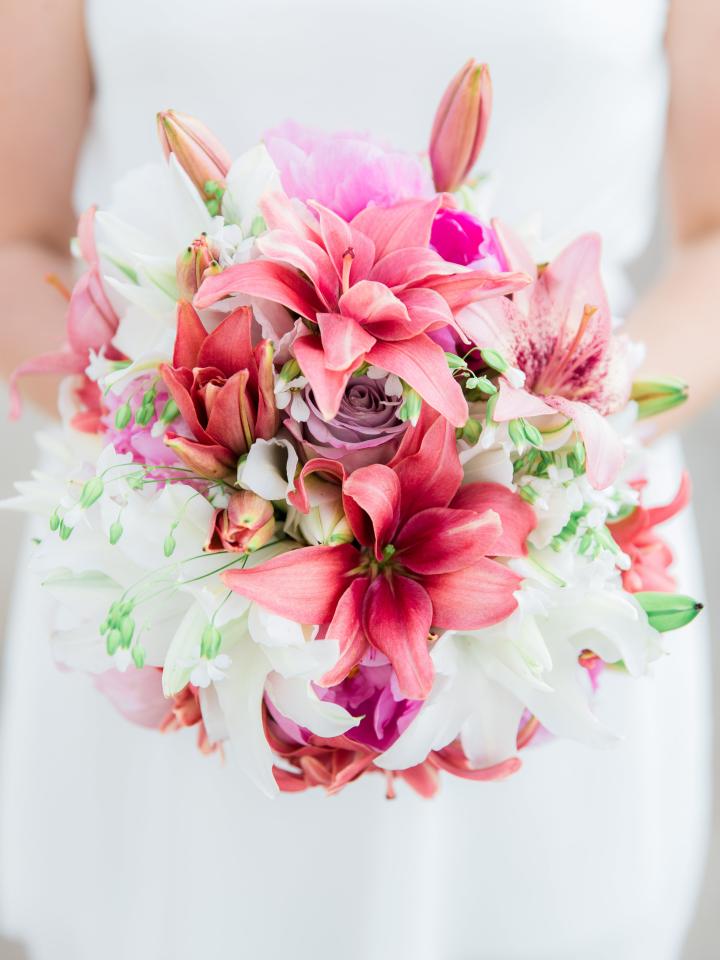
ARE THERE LILIES WITHOUT STAMENS?
Do you love lilies but fear staining your clothes with pollen? We feel you. There are double-flowered lily varieties, such as the beautiful Roselily, that have no stamens. This give you the advantage of eliminating the chances of having yellow spots on your clothes and furnishings. This kind of flower is also less strongly scented than lilies, if you have a sensitive nose.
ARE LILIES POISONOUS?
Yes, all parts of the lily (stem, leaves, pollen and flowers) are toxic to humans and pets, such as dogs and cats. Even the vase water in which lilies are placed is toxic. Keep lilies out of reach of children and pets. Consult a doctor in case of ingestion. Symptoms may include nausea, diarrhoea, abdominal pain and skin irritation. Consult a vet in case of ingestion by a pet.
Cats are more susceptible to lily poisoning than dogs. Even ingestion of small amounts (e.g. licking a paw with pollen on) can cause serious health problems. If your cat ingests any form of a lily, see a vet as soon as possible. Poisoning in cats can lead to kidney failure, among other things. Unfortunately, the smell of lilies attracts cats, making them want to lick lilies. If your home is blessed with a cat, keep lilies far out of their reach or consider avoiding them altogether in your home and garden.
